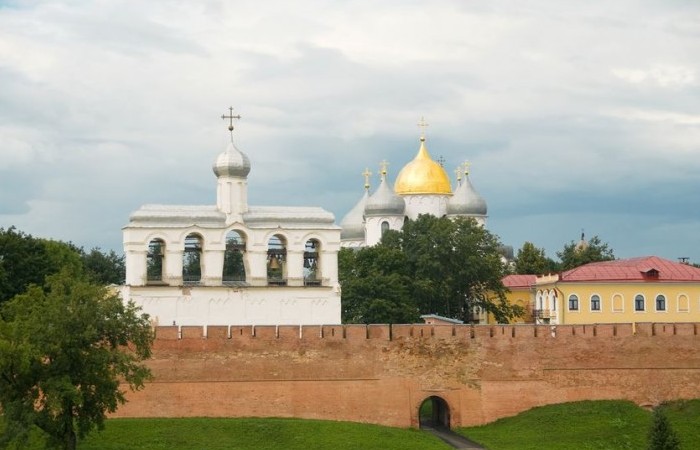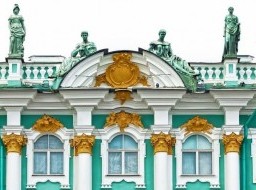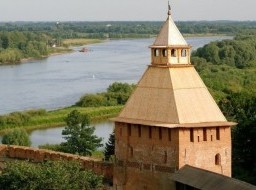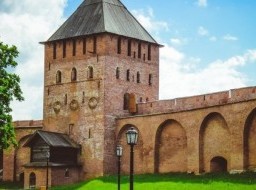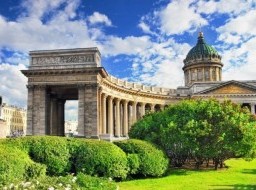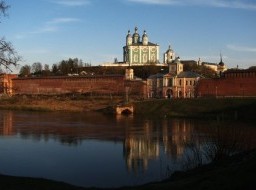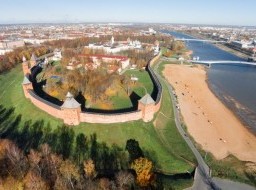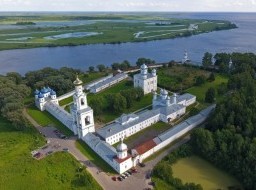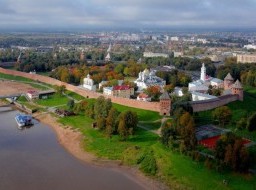Veliky Novgorod (Novgorod-the-Great)
Veliky Novgorod is one of the oldest Russian cities, first mentioned in chronicles of 859. It is one of the centers of the formation of the Russian state, a city with ancient history, and the "father of Russian cities". It was a medieval trading republic, and a transit centre between Western Europe and Russia. Novgorod is notable not only for its historical value, and the remaining monuments from the times of old, but also for its unique culture. In particular, it is home to Novgorod birch bark writing. The historic centre of Novgorod is on the UNESCO list. Veliky Novgorod is the cradle of Russian democracy, medieval center of trade and crafts. In 882 Oleg, prince of Novgorod, captured Kiev and moved his capital there. The first reference to Novgorod as a fortified settlement was found in the chronicle of 859. The scientists still debate about the exact date of the city establishment and location of the «old» town. The opinion prevails that it was situated at so-called Gorodishche, at the right bank of River Volkhov, 2 km to the contemporary city. It is believed that a Varangian prince Ryurik, who was summoned to the rule in the IXth century and founded the Ryurik dynasty, put his and his armed force's camp just in this place. In the Xth century, this settlement was relocated to the nowadays area (which, according to a version, explains Novgorod's name as «New town»). In the Middle Ages, Novgorod governed the lands from the Volga river to the shores of the Arctic Ocean. Since the end of the X century, Novgorod became next to the most important center of Kievskaya Rus. The city was the earliest international trading centre of Eastern Europe. Its location at the joint of the routes connecting the Baltic rim countries to the Mediterranea («From the Varangian to the Greek») and to the East via Povolzhye (Volga surroundings), provided for the intensive development of the trade, crafts, culture. 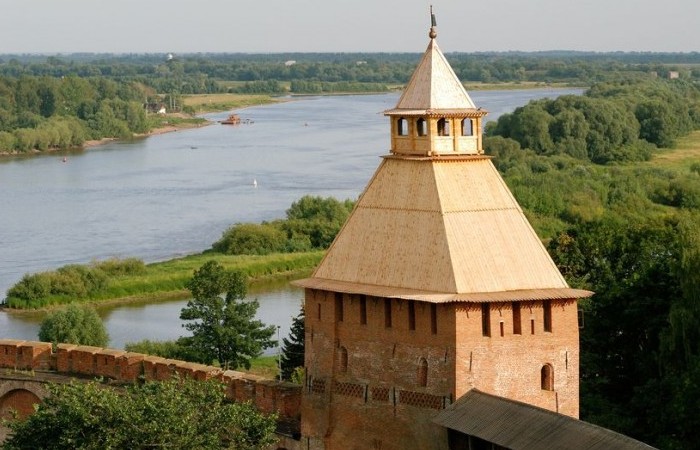 Fortress in Veliky Novgorod - one of the oldest and most beautiful cities in Russia In the era of Kievskaya Rus, the eldest son of the Kiev's Grand Prince by tradition «sat» in Novgorod to gain the experience and learn the wisdom of a ruler. Prince Vladimir, who would later unite all Russian lands as the grand prince of Kiev and baptize Russia in 988, emerged on the political scene in Novgorod. The "illegitimate" son of Prince Sviatoslav and a slave, Vladimir was elected the «posadnik» or governor of Novgorod. The life of his son, another outstanding statesman of the Russian Middle Ages, Yaroslav-the-Wise, was also closely connected with Novgorod. He was put on the Grand Prince's throne twice, in 1015 and 1019. In 1019 Yaroslav-the-Wise granted Novgorod its independence on Kiev and the rights of a free city, both used to be princes of Novgorod before assuming the throne in Kiev. Novgorod is the birthplace of the Russian democratic, republican traditions. In 1136-1478, Novgorod was the capital of Novgorodskaya feudal republic, ruled by Veche - a people’s assembly which made decisions on war and peace, summoned and banned the princes, accepted the laws, concluded the agreements with other territories, elected «Vladyka» - the archbishop of Novgorod, etc. The city was «free-handed in princes»: a prince was summoned to rule for a certain term, usually, for a war period, and on the conditions listed in a special contract.
Veliky Novgorod is famous all over the world for its notable repository of architectural monuments, murals and collections of Russian icon-painting and applied art. Nowadays, the visitors to Veliky Novgorod can enjoy a tour of the unique complex of structures dating from the eleventh to the seventeenth centuries. The main landmark is the Kremlin which was first mentioned in the Chronicles of 1044. Originally it consisted only of the Bishop's Court. In the early twelfth century the territory of the citadel was extended, but the Kremlin began to be used as a military fortification only at the beginning of the fourteenth century when it attained contemporary dimensions and stone walls were erected instead of wooden ones. In the late fourteenth century ramparts were built around the entire city, with wooden walls and stone towers over them. The walls and towers have acquired present-day appearance at the end of the fifteenth century. Studies have revealed unique birch-bark manuscripts of the Middle Ages, proving almost all the inhabitants of Novgorod were literate. St. Sophia cathedral, built in 1045-1050 is the oldest stone building in Russia. Now Veliky Novgorod is an important administrative and tourist centre. It is one of the most important scientific, cultural, and industrial centres of the North-West of Russia. There are theatres, cinemas, concert halls, libraries, art galleries, museums and a wide diversity of shops and restaurants. |

